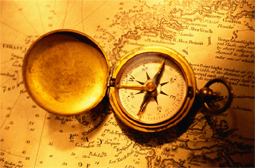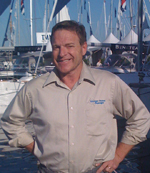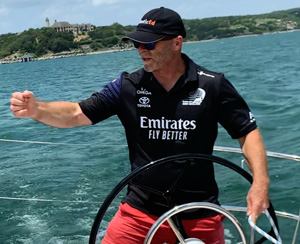- Home
- About Us
- Sailing Courses
- SLC - Sailing License
- Sailing Vacations
- Sailing Schools
- Practical Courses
- Boating Knowledge Base
- Fighting Childhood Cancer
- Free Courses Signup
- Gift a Sailing Course
- Sailing Opportunities
- Sailing Licenses and Certifications
- About the Sailing Certifications
- Sailing Blog & Helpful Articles
- NauticEd Podcast Series
- Yacht Charter Resources
- School Signup
- Instructor Signup
- Affiliate Signup
- Boat Sharing Software
- Sailing Industry Services
- Support & Contact
- Newsroom
- Privacy Policy
Coastal Navigation | Online Course
Register for the Coastal Navigation Course online course and gain essential navigation skills for all sailors operating away from familiar waters, both inland and near coastal.
This comprehensive course covers all the necessary knowledge and skills you need to navigate the inland and near coastal waters safely and efficiently. From understanding charts and plotting a course to interpreting rate and direction from wind, tides, and current - this course will provide you with the skills and knowledge necessary to navigate through unfamiliar waters.
Whether you are a beginner or an experienced sailor, this course is a must for anyone looking to expand their sailing knowledge and become a confident navigator and competent sailor. Enroll now and take the first step towards mastering the art of coastal navigation.
In this Coastal Navigation Course you will learn:
- The Charts and how to use navigation tools
- True north and magnetic north - and variation and deviation
- Determining your position using various techniques such as dead reckoning, running fixes, and triangulation
- What to do with your GPS position to get you to your destination
- Extensive explanation and working with tides including apps and online digital data
- Rate and Direction from wind, tides, and currents
- How to simply determine your heading based on Rate and Direction
We guarantee both your satisfaction AND Lifetime access to any sailing course you buy from us
More about this Coastal Navigation Sailing Course
- The Coastal Navigation online course teaches navigation knowledge and skills for inland and near-coastal sailing
- Extensive and essential knowledge for Coastal Navigation
- This Sailing Course takes approximately 10 hours of total time to complete
- Take as long as you need to complete
- Return as many times as you like to review
- Take the online test as many times as you like
- Adds Coastal Navigation Endorsement to your Sailing resume
- Essential for Bareboat Chartering Knowledge
- Required for the Mediterranean license (SLC)
- View an excerpt from the Coastal Navigation Course
This is an ONLINE course and test viewable in your browser window. You will also be able to download a PDF version to print or view on your iPad or tablet.
Today's Investment: $39 (Or $33 with the Bareboat Charter Master Rank Bundle of sailing courses)
(Note this is a real chart-based course. You will need the Long Island Sound chart and your own plotting tools. The chart you can buy online for approximately $15. If you have your own plotting tools you can use those. Alternatively, you can download the chart yourself for free and take it to a print store or you can get the full navigation pack ($39) from Amazon which contains the chart, a rotating protractor-plotter, and a set of compass dividers. Full details are listed in the course.
If you are considering this course you should also consider our Electronic Navigation course. Both courses combined provide fundamental sailing navigation while also giving you knowledge of how to best use today's hi-tech tools. Electronic Navigation is FREE with the Bareboat Charter Master and Captain Bundle of courses.
Not convinced yet that online sailing courses are cool? Visit our fully interactive and completely free Basic Sail Trim Sailing Course. You'll see why online e-learning is SO MUCH BETTER than a boring old Book.
This Coastal Navigation Course is quite possibly one of the best values on the Internet. For just $39, you will fully understand the fundamentals of Coastal Navigation and be able to practically apply them wherever you go. The Course will take you about 10 hours to complete including the test. Upon completion, you will immediately receive the NauticEd Coastal Navigation Proficiency Certificate.
Register for the NauticEd Coastal Navigation Course now and impress your friends with your knowledge!
Foreword by Captain Grant Headifen. Enough years ago, so that this story can be attributed to youth rather than present-day embarrassment, we set off from St. Bart's in the Caribbean to St. Eustatius. While most islands in the Caribbean can be navigated by a line of sight, with this passage, St Eustatius is over the horizon so proper navigation techniques were required.
This was my first Chartering experience and as Captain, I was responsible for 6 crewmembers' lives and, of course, the vessel. A quick check of the charts revealed that St Eustatius was slightly west of a due south heading and was about 25 miles away - at 6 knots that would take us about 4 and a bit hours. Simple enough. Up anchor and hoist sails. Yet three times in 1/2 an hour increments something inside me was questioning my rudimentary assessment of the navigation ease. Finally, on the third visit to the charts, I spotted the compass rose and thus the source of my anxiety. At that position on the planet, the difference between the chart's definition of north and the compass reading of north is different by nearly 15 degrees.
 Whoops! A simple but amateurish mistake. Time to get serious. Now more skillful techniques had to be called upon. A new and real position had to be calculated based on the 1.5 hours of incorrect heading and the average maintained speed. Then a new plot direction had to be established for St. Eustatius based on our newly determined position. To double confirm that newly determined position I triangulated our position by taking compass shots off various islands. Back on track, we thoroughly enjoyed the rest of our vacation with a lesson never to be forgotten!
Whoops! A simple but amateurish mistake. Time to get serious. Now more skillful techniques had to be called upon. A new and real position had to be calculated based on the 1.5 hours of incorrect heading and the average maintained speed. Then a new plot direction had to be established for St. Eustatius based on our newly determined position. To double confirm that newly determined position I triangulated our position by taking compass shots off various islands. Back on track, we thoroughly enjoyed the rest of our vacation with a lesson never to be forgotten!
Such amateurish mistakes can lead to serious consequences. What if there had been a reef on our mistaken course? Get the picture?
Captain Ed Mapes' Coastal Navigation Course, as you'll discover, is one of those "oh durh could have had a V8" moments because of his reduction of the seemingly intimidating world of marine navigation to an exciting understanding and confidence in your knowledge to now - Navigate. He has turned intimidation to inclination. Inclination to get out and really practice and use your new skills.
You'll leave this Coastal Navigation Course with an understanding of:
- The Charts and how to use navigation tools
- True north and magnetic north - and variation and deviation
- Determining your position using various techniques such as dead reckoning, running fixes, and triangulation
- What to do with your GPS position to get you to your destination
- Set and drift from wind, tides, and currents
- How to simply determine your heading based on Set and Drift
You'll then run through real exercises to build your confidence. In the first Module, we'll introduce you to Landfall Navigation where you can mail order globally ($10 +S&H) a practice chart for the confidence-building exercises and the test. The test grades are in real-time - so that once you've passed - you'll have your Navigation Certification in hand immediately.
Register for the NauticEd Coastal Navigation Course now and as an incredibly FUN BONUS, we'll give you a GPS treasure hunt formula that you can use to set up in your neighborhood park for an enjoyable family and friends navigation picnic. Remember, with NauticEd, you can return as many times as you like to brush up on your navigation skills for FREE.
There are possibly only a few things more fun than scooting along the ocean taking compass sights off islands using dead reckoning and running fix skills to determine your position and then calculating your ETA. One of those things is actually meeting your ETA, then celebrating with a cold drink and your feet in the sand.
Please enjoy Captain Ed Mapes' Coastal Navigation Course. As with all NauticEd online sailing lessons, if you don't feel as though you received the value for this Coastal Navigation sailing class, we'll simply refund your $39 investment back to you. With thousands of happy NauticEd students, however, we doubt that will happen.
If you still have questions about NauticEd Sailing School, the courses, and/or the sailing certifications, contact us via email or phone, we're happy to help.

By Ed Mapes
USCG Captain Master Mariner

By Grant Headifen
NauticEd Global Director of Education
View Coastal Navigation Course excerpt
Student Reviews
Chris B.
2024, 05 Feb. 23:58
Great course and very challenging.
Steven C.
2023, 28 Dec. 00:47
good on running fix, bearings and courses made good etc. Sufficient on navigations markers etc.
Curtis H.
2023, 17 Nov. 18:54
easy to understand
James J.
2023, 27 Oct. 02:46
Extremely challenging with lots of opportunities to practice!!
Gisle H.
2023, 13 Aug. 13:02
Good presentation of the most important issues
Theodore A.
2023, 10 Aug. 16:56
Pretty good refresher course. I was reminded of the dizzying number of lights and ATNs in Long Island Sound!
Brian R.
2023, 06 Jul. 15:14
.
David S.
2023, 06 May. 17:13
Great review of details of dealing with paper charts. In my 25 years of sailing with modern instrumentation, I had forgotten much of the techniques of what was in the course.
Scott R.
2023, 25 Apr. 15:27
engagement and online
Rafael S.
2023, 23 Mar. 02:19
Very good exercises to practice the old navigation ways and set the basics for navigation
Terence H.
2023, 09 Mar. 18:32
This course covers the essentials for coastal navigation.
Mark R.
2023, 26 Feb. 16:09
Very hard, but a very good course.
List Price: $39.00
Excerpt from the course
Expand Excerpt from the courseQuestion:-
You are sailing along on a heading of 57° psc (61° Mag) (47° T), and your knot meter reads 5 knots. You are passing Horton Point Light to your starboard. At 1548, a handheld bearing shows that the bearing to Horton Point Light is 119°Mag (105°T). You decide to do a running fix. At 1615, the bearing to Horton Point Light is 160°M (146°T). Determine your running fix position.
Solution:
Watch the animation then read the text then watch the animation again.
The time elapsed is
1615 minus 1548
Or
1575 -1548 = 27 minutes (/60) = .45 hours
At 5 knots you will travel 5 x 0.45 = 2.25 NM
You draw the true bearing line of 105° T to Horton Point Light. You then draw a vector 2.25NM long in the direction of your heading 47° T starting anywhere on the 105° line. You then draw another line parallel to the first 105° T bearing that intersects the endpoint of the 2.25NM vector. Finally, you draw in your second bearing line of 146° T. Where the 146° T line intersects the parallel 105° T line - you mark it as your running fix position.
The theory behind this is simple but not usually explained. Initially, you must lie on the 105-degree line somewhere but you don't know where. You know that over the time elapsed, you will travel the 2.25 NM from somewhere off the initial 105-degree line but you don't know where - yet. The parallel 105-degree line projected forward means that you will also lie somewhere on that projected line - again -somewhere. By doing the second bearing - off any object - the intersection of that bearing with the projected line means you must be at that point (given that your speed and heading were accurate).
Answer - LAT 41° 06.1' N and LONG 72° 27.0'W
Other Sailing Courses that you might enjoy
Maneuvering a Sailboat Under Power
Anchoring a Sailboat
Sea talk testimonials
I now have 2 bareboat catamaran charters in the Grenadines under my belt. From my knowledge gained with NauticEd, I encountered no issues or difficulties and both charter companies were completely satisfied with my NauticEd resume. Thanks for making this happen for me and my family.


